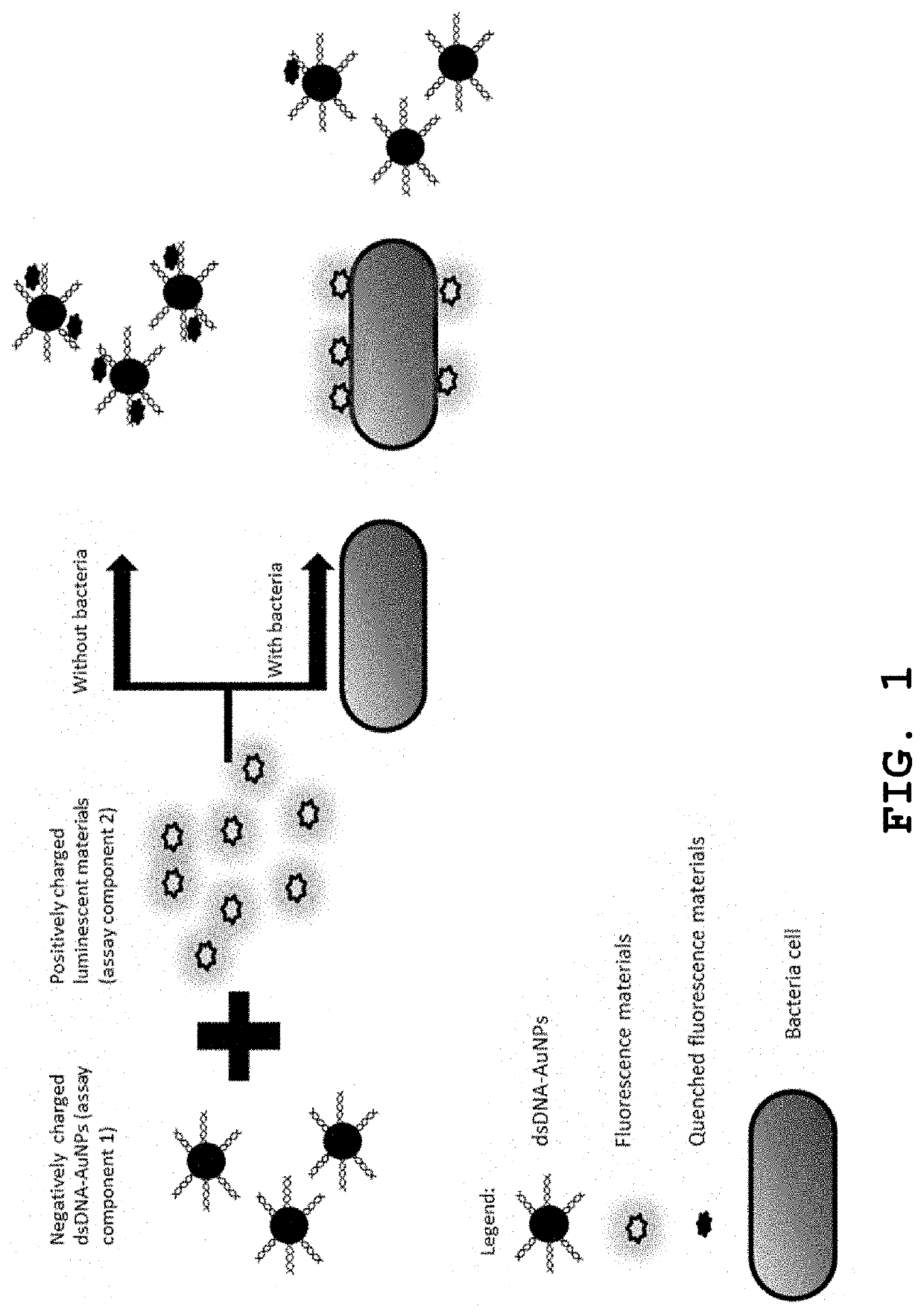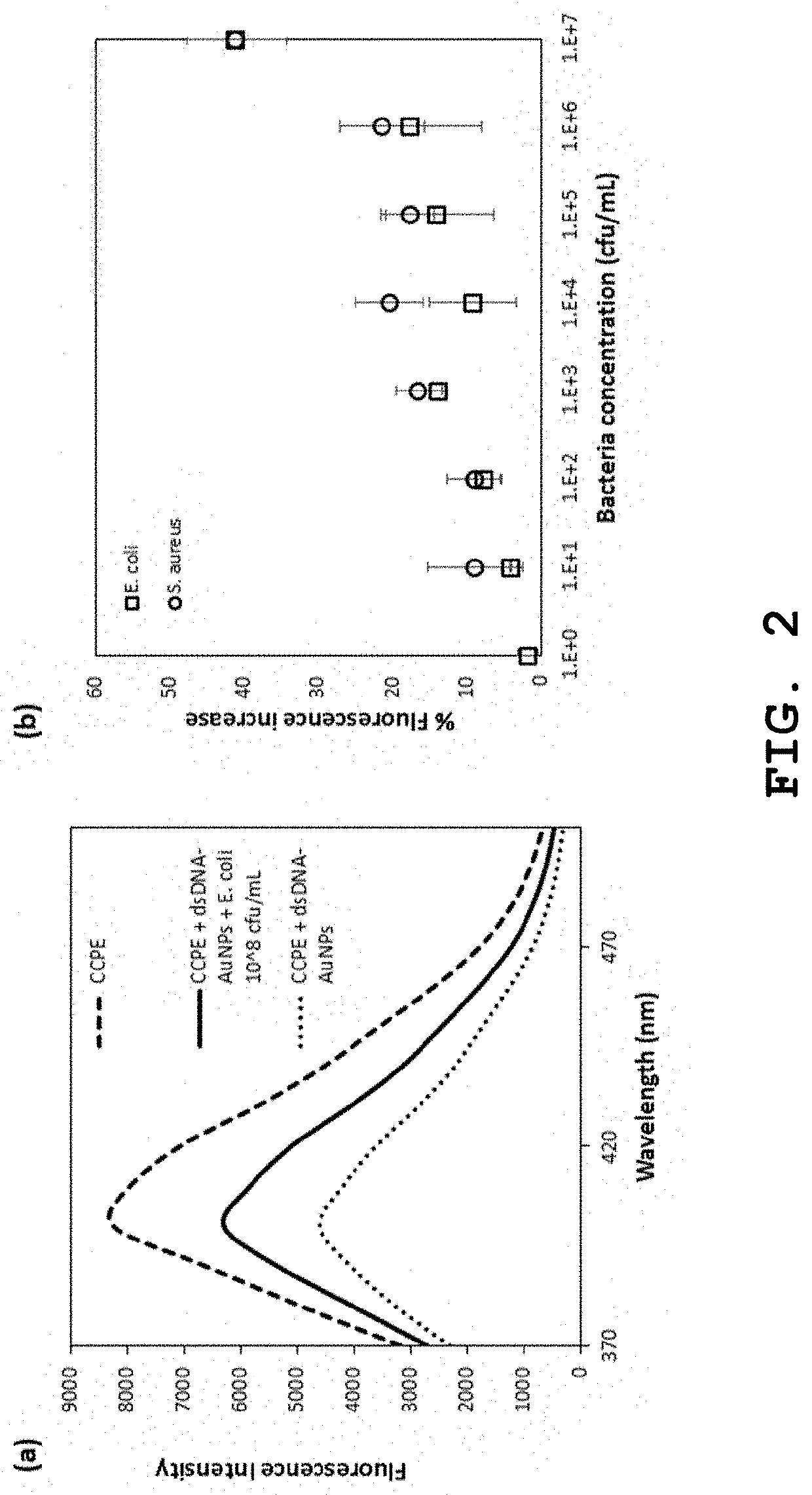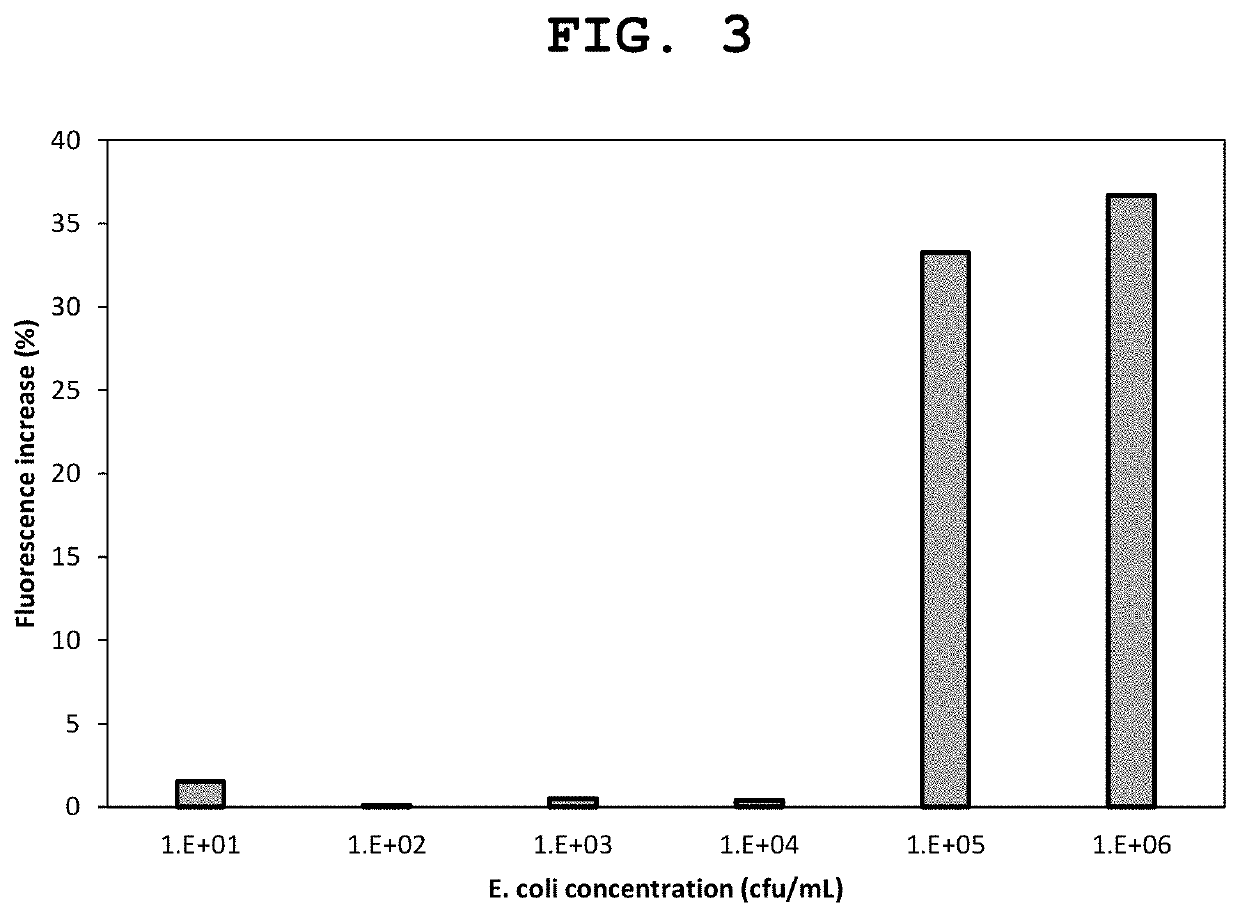Nanomaterial-based Bacterial Sensors
a technology of nanomaterials and sensors, applied in nanotechnology, nanotechnology, instruments, etc., can solve the problems of inability to use in a wide range of ph and temperature ranges, inability to meet the requirements of bacterial detection limits, and time-consuming
- Summary
- Abstract
- Description
- Claims
- Application Information
AI Technical Summary
Benefits of technology
Problems solved by technology
Method used
Image
Examples
example 1
[0057]Fluorimetric competition assay involving positively charged luminescent materials and negatively charged AuNPs for total bacteria counting and differentiation of live / dead bacteria
Mechanism:
[0058]This sensor is based on a competitive binding of positively charged luminescent materials with either the negatively charged bacteria cells or negatively charged dsDNA-AuNPs (FIG. 1). When there are no bacteria in the sample, positively charged luminescent materials mostly bind to negatively charged dsDNA-AuNPs through electrostatic interaction, and their fluorescence is quenched by AuNPs through fluorescence resonance energy transfer (FRET). When bacteria are present in the sample, the negatively charged bacteria cells compete with negatively charged dsDNA-AuNPs to bind the positively charged luminescent materials that limits the binding of the luminescent materials to dsDNA-AuNPs quencher. As a result, the fluorescence intensity remains high, higher than the quenched state when ther...
example 2
[0065]Fluorimetric competition assay involving positively charged luminescent materials and negatively charged graphene oxide (GO) for total bacteria counting and differentiation of live and dead bacteria
Mechanism:
[0066]This assay is based on competitive electrostatically interaction of positively charged luminescent materials with negatively charged bacteria cells and negatively charged GO (FIG. 5). When there are no bacteria in the sample, positively charged luminescent materials mostly bind to negatively charged GO, and the fluorescence intensity is quenched by GO through Fluorescence Resonance Energy Transfer (FRET). When bacteria present in the sample, the negatively charged bacteria cells compete with negatively charged GO to bind the positively charged luminescent materials. The luminescent materials bound on bacteria cells are not quenched by GO, and maintain their fluorescence intensity, resulting in a higher fluorescence intensity than the quenched state when there is no b...
example 3
Interference of Coloration and Other Impurities
[0073]Ketchup, soy sauce, pulpy orange juice samples were tested. The microplate reader is TECAN, model Infinite M200. The microplate reader set up includes built-in Xenon lamp and fluorescence monochromator.
[0074]CCPE poly[(2,5-bis(2-(N,N-diethylammonium bromide ethoxy)-1,4-phenylene)-alt-1,4-phenylene] was purchased from Sigma Aldrich (product code 678074). PFBD poly[9,9-bis((6-N,N,N-trimethylammonium)hexyl)fluorene-alt-co-2,1,3-benzoxadiazole dibromide was synthesized by Prof. Liu Bin's group in NUS. GO was purchased from Sigma Aldrich (product code 763705). Bacteria samples were E. coli ATCC 25922 and S. aureus ATCC 6538 cultured in IMRE on natural agar plate.]
[0075]When tested as received (no-dilution), these samples have auto-fluorescence background that masks the fluorescence signal of the luminescent sensing materials, cationic conductive polyelectrolyte CCPE-410 that emits at 410 nm (FIG. 9).
[0076]The auto-fluorescence backgrou...
PUM
| Property | Measurement | Unit |
|---|---|---|
| detection time | aaaaa | aaaaa |
| detection time | aaaaa | aaaaa |
| thickness | aaaaa | aaaaa |
Abstract
Description
Claims
Application Information
 Login to View More
Login to View More - R&D
- Intellectual Property
- Life Sciences
- Materials
- Tech Scout
- Unparalleled Data Quality
- Higher Quality Content
- 60% Fewer Hallucinations
Browse by: Latest US Patents, China's latest patents, Technical Efficacy Thesaurus, Application Domain, Technology Topic, Popular Technical Reports.
© 2025 PatSnap. All rights reserved.Legal|Privacy policy|Modern Slavery Act Transparency Statement|Sitemap|About US| Contact US: help@patsnap.com



